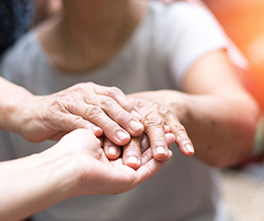When you hear someone talk about Parkinson’s disease, what’s the first thing that comes to mind? For most people, they think of the visible impact the disease has on the body – such as the tremors or difficulty walking. But the truth is, you encounter people more often than you think who have Parkinson’s, and you wouldn’t even know.
It’s estimated that a million people are living with Parkinson’s in the United States. It’s a neurodegenerative disorder that forms when the brain stops making enough dopamine, which affects the movement and control of our body. For some patients, this may happen due to genetics or exposure to different types of chemicals. However, for the vast majority of patients, we don’t know why the dopamine production starts to diminish. The average age for diagnosis is 58, but during my time as a movement disorders neurologist, I’ve treated patients that range in age from 24 up to 100 years old.
Parksinon’s usually starts on one side of the body. People may have a tremor, or shake, in their hand, arm or leg. The disease can often impact walking – causing people to shuffle along the floor instead of walking normally. Loss of motor control, a soft or raspy voice, and a change in facial expression or lack of emotion are also associated with Parkinson’s. Anyone experiencing these symptoms should see a specialist.
Getting diagnosed early is extremely important. You can’t stop the disease, but you can sometimes slow its progression or make it more manageable. There have been considerable advancements in the treatment of Parkinson’s thanks to various types of medication, which can help the brain make some of the dopamine that it’s not producing on its own, which ultimately can help reduce symptoms. Exercise, diet, sleep optimization and education can also have a significant impact. Multidisciplinary centers have also become important in the treatment of Parkinson’s disease because they have all the therapies and resources that often lead to better outcomes for our patients.
We’ve made great strides in the early diagnosis and treatment of the disease. The one thing I stress to everyone is to recognize the symptoms and seek out medical care as soon as possible. Your symptoms may not be related to Parkinson’s, but we can at least rule that out. And if they are, we can intervene immediately.



